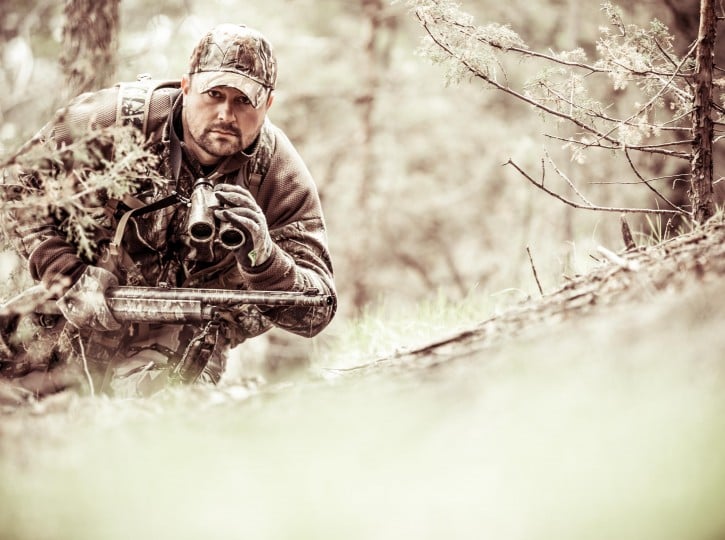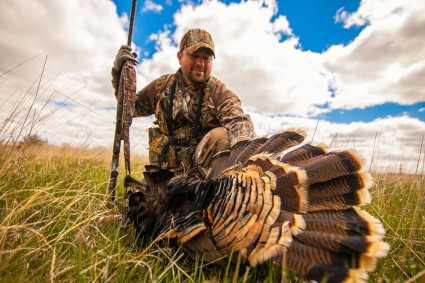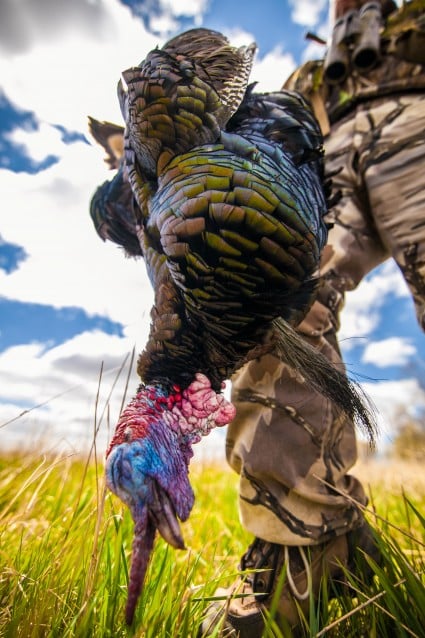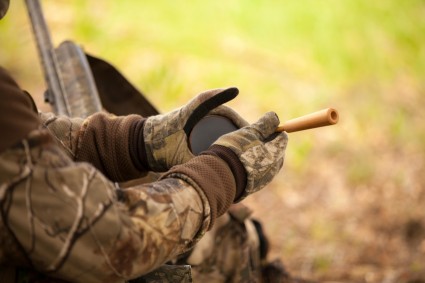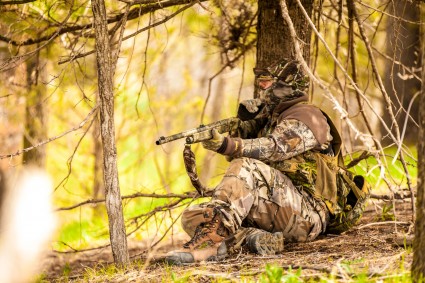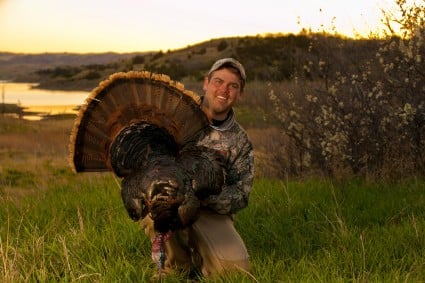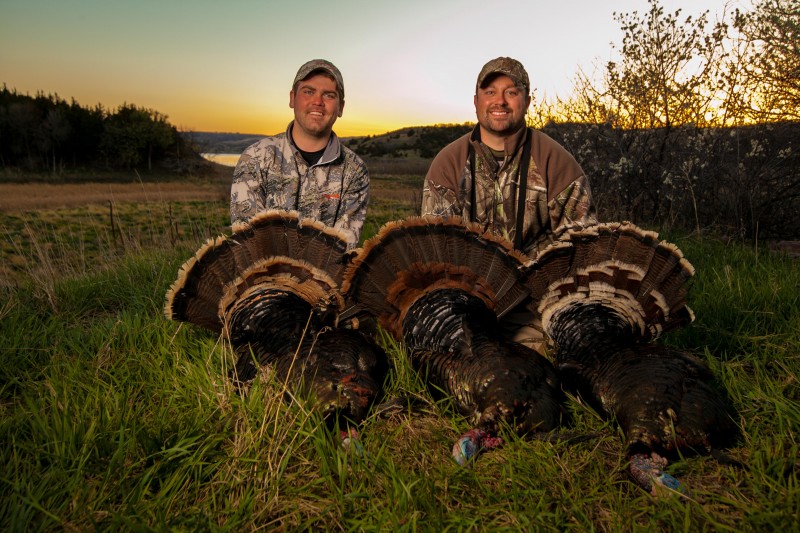WHY?
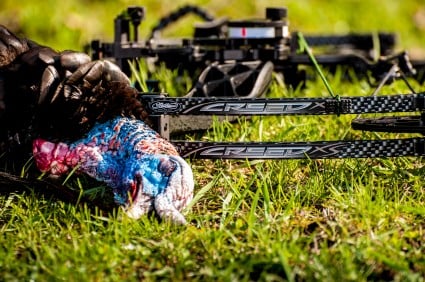 If you hunt turkeys long enough with a shotgun, eventually you’ll want to go after them with a bow. If you shoot a few of them using a trusty box call, you’ll someday want to try your hand at bringing them in with a mouth call. So goes the evolution of a turkey hunter. Kill enough birds in your backyard, and you’ll soon be ready for a new challenge in a new place, with birds that you’ve never picked on before. Why? Well, the leap’s not that big, considering you already love to do it. As turkey hunters, we tend to be optimists, dreaming of what could be as much as what really is. I’ll give you another reason; there’s different turkeys in different parts of the U.S. Don’t look now, but those eastern subspecies birds you have figured out in the Midwest don’t extend too far past the Minnesota border when you head westward. South Dakota, Nebraska and the mountainous states contain a bird I consider to not only be the most beautiful, but also one of the most fun to hunt in the Merriam’s.
If you hunt turkeys long enough with a shotgun, eventually you’ll want to go after them with a bow. If you shoot a few of them using a trusty box call, you’ll someday want to try your hand at bringing them in with a mouth call. So goes the evolution of a turkey hunter. Kill enough birds in your backyard, and you’ll soon be ready for a new challenge in a new place, with birds that you’ve never picked on before. Why? Well, the leap’s not that big, considering you already love to do it. As turkey hunters, we tend to be optimists, dreaming of what could be as much as what really is. I’ll give you another reason; there’s different turkeys in different parts of the U.S. Don’t look now, but those eastern subspecies birds you have figured out in the Midwest don’t extend too far past the Minnesota border when you head westward. South Dakota, Nebraska and the mountainous states contain a bird I consider to not only be the most beautiful, but also one of the most fun to hunt in the Merriam’s.
HOW?
From a planning standpoint, one thing that makes traveling for western birds a no-brainer is that in many states, there’s plenty of tags. There are early bow seasons, over-the-counter tags for some states, and even separate reservation lands tags available. Opportunity abounds, but there are a few things to straighten out in terms of planning long before you consider buying a tag. How far are you willing to travel? Do you need a hotel/motel setup, or would “tenting” it be fine for most nights. What is your weapon of choice and are you flexible in that regard? Also, is one turkey enough, or if you go will you try to make an extended vacation and like to have the opportunity to take multiple toms? Each state offers slightly different tag options, but there’s one detail to me that needs addressing first and foremost – pay or public?
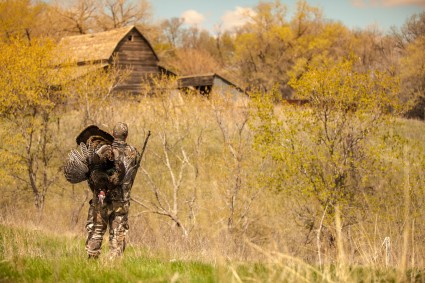 Public hunting opportunities have a lot going for them, especially out west. National Forest lands often have plenty of birds, and many states like South Dakota have walk-in hunting areas and other public land designations that make public turkey hunting no problem. There’s also door-knocking, though you might expect, the farmers with large visible flocks next to their farmyards get plenty of visitors already come turkey season. As you might expect, there’s competition for the best of the best habitat, and areas that are easily accessible, isolated, or otherwise heavily traveled will have few birds or extremely pressured birds. This effect is exacerbated on shotgun hunts, definitely the more popular in terms of numbers, where the opening weekend or two sees the lion’s-share of the pressure for those months. Still, especially with time, persistence, and the willingness to wear off some boot-sole, hunters are typically rewarded with success.
Public hunting opportunities have a lot going for them, especially out west. National Forest lands often have plenty of birds, and many states like South Dakota have walk-in hunting areas and other public land designations that make public turkey hunting no problem. There’s also door-knocking, though you might expect, the farmers with large visible flocks next to their farmyards get plenty of visitors already come turkey season. As you might expect, there’s competition for the best of the best habitat, and areas that are easily accessible, isolated, or otherwise heavily traveled will have few birds or extremely pressured birds. This effect is exacerbated on shotgun hunts, definitely the more popular in terms of numbers, where the opening weekend or two sees the lion’s-share of the pressure for those months. Still, especially with time, persistence, and the willingness to wear off some boot-sole, hunters are typically rewarded with success.
Now what if you’re short on time, or what if you simply don’t have enough general knowledge of the state/area you select to get started? Outfitters are a good way to shave back the front end of the learning curve, very similar to a fishing guide when tackling a new body of water. On a hunt last spring, IDO’s Ben Brettingen and I employed the services of Tom Steinhauser at Platte Creek Lodge in Platte, SD to help us get on track. Being a touch ambitious, we had both South Dakota bow tags, and Nebraska turkey tags as well. Tom acted like a broker of hunting lands, which is exactly what we needed. South Dakota’s Missouri River has incredible turkey hunting habitat, but it can be like a maze with vast sections of it falling under individual ownership and literally blocked off from hunting without permission. There are public lands directly adjacent to the river, but the birds we found were relating more to corn and other crop residue located on the higher, private land portions of the slopes where croplands met deep ravines.
Tom also put us in contact with Nets Peak Outfitters in Nebraska to line up our opportunities across the border. Nebraska is a wonderful state to hunt turkeys in, as there’s a 3 bird limit, and all licenses are over the counter. Ben and I would start with one tag, and buy tags as we filled them until our hunting time was finished, giving us the ultimate in flexibility throughout our stay. We chose to hunt Nebraska with shotguns to get the monkey off our backs, then move back to South Dakota to try and take on a more challenging hunt with a bow. This worked great, giving us both tons of opportunities, and the ability to select what weapon we wanted to hunt with and how many birds we wanted to take.
- Merriams are readily abundant in the west, and a short drive from the midwest
- Joel Nelson hoofing back his NE Prize
- This gobbler fell on a bluebird May morning
- Purring in an NE Thunder Chicken
- Joel Nelson searches for a nearby Longbeard
- Ben Brettingen Hoists a SD Gobbler
WHAT TO BRING?
I’m not going to tell you what to put in your vest, as we all have our favorite trinkets, doo-dads, and whatchamacallits. I will however offer up a few items that most people need on hunts, but you REALLY need on an out of state hunt.
- Power – Smart phones become indispensable tools to the traveling turkey hunter, as provided you can find some service, everything from lodging to land access can be figured out on your mobile device. That is, until your phone that’s been roaming for two counties, quickly drains itself trying to find a signal. Gas station chargers often only keep your phone at a stand-still, so do some research on the front end to find a max-output charging solution. There’s also mobile battery banks, and extra cell phone batteries to look into. Come prepared if you plan to use your phone!
- Cooler – A well-stocked cooler keeps you out hunting more, plain and simple. Keep this item well-stocked, and you won’t need additional trips to town to ice-down birds or get some snacks. Heavy duty plastic bags in various sizes will keep turkeys separated from other items in the cooler, and keep food from swimming in all the ice water that accumulates. One big box of quart, gallon, and two-gallon sizes each isn’t overkill.
- Good Raingear – I learned last season, again, the value of not forgetting your raingear. It’s a lesson I’m no stranger to, as inevitably, rain will come at the most in-opportune time while you’re hunting. More importantly, without it, you’re either sidelined or soaked, with the latter being something you pay for with wet clothes throughout the rest of the trip. Or worse, with some sniffles and a chill you have a hard time shaking.
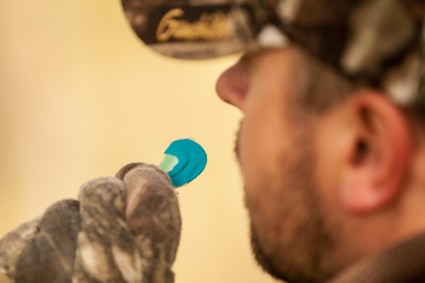 Best Call Backups – I have a box call and a mouth call that I’d prefer to never do without. In fact, I have several of them, some just not in my current possession. One of them is under a tree in northwestern Nebraska where I killed a particularly bright-white-tailfeather-tipped Merriams. In all the excitement, I just walked off without my box. A few more calls are scattered casualties of unbuttoned vest pockets, strewn about the hillsides of Minnesota and Wisconsin. If you need it, you better bring two, especially if they’re small.
Best Call Backups – I have a box call and a mouth call that I’d prefer to never do without. In fact, I have several of them, some just not in my current possession. One of them is under a tree in northwestern Nebraska where I killed a particularly bright-white-tailfeather-tipped Merriams. In all the excitement, I just walked off without my box. A few more calls are scattered casualties of unbuttoned vest pockets, strewn about the hillsides of Minnesota and Wisconsin. If you need it, you better bring two, especially if they’re small.
- Shells – Turkey hunters are a fickle lot these days regarding ammo. I used to just pickup any 3” magnum shell in #5 or #6 copper-plated shot, and kill plenty of turkeys. These days, I trust the consistency and performance of the loads I pattern well before turkey season starts. So much so, that I’d prefer not to have to deal with the uncertainty of what I might find out on the road. I’ve shot as many as 9 shells in a single out of state hunt (I don’t want to talk about it), so 2-3 boxes isn’t too many. I’ve also been with hunters that have run out of ammo.
That wraps up most of the highlights. Suffice to say, if you haven’t hit the road in search of additional turkey hunting opportunities yet, you likely soon will. To me, the road west is the one I enjoy most. Maybe it’s the wide-open-spaces or the Merriam’s sub-species itself, but whatever the reason I can’t envision a season where I won’t head westward to take in some new wild turkey hunting adventures.
